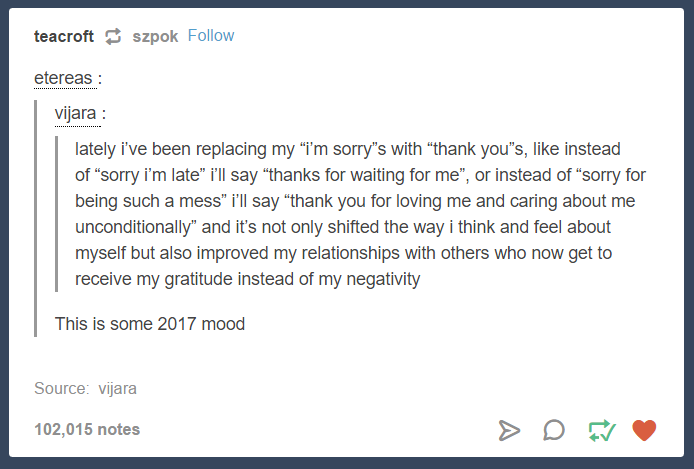Two Lifechanging Words: “Thank You” Instead of “I’m Sorry”
From the wilds of Tumblr comes this advice:
This is an amazing way to flip the script from you making a mistake (and all the negative emotions that come with that) to creating a positive connection with the person you’re talking to. Kat Boogaard at The Muse tried it for a week and found that it made a big impact, not only on the people she had previously been apologizing to, but on her own image of herself.
When I had previously spewed out countless sorries, I spent a good chunk of time feeling guilty. I had begun our exchange with something negative, which then seemed to cast a dark shadow over the rest of our conversation—like I had started things off on the wrong foot and needed to spend the rest of my time proving myself and recovering for my faux pas.
But, by switching that negative to a positive, I found that I could move on from my slip-up much faster. I didn’t need to spend time mentally obsessing over what I had screwed up because my genuine “thank you” had provided a much more natural segue into a different discussion—rather than the awkward exchange that typically follows an apology.
If you know you’re saying “I’m sorry” too often, like one of our bloggers posted last year, but don’t know how to stop or what to do instead, try saying “thank you” instead and let us know how it goes!







2 Comments
Love this idea (says the native southerner who apologizes if the rain interferes with a family function).
I know, right? Us and Canadians, man. 🙂